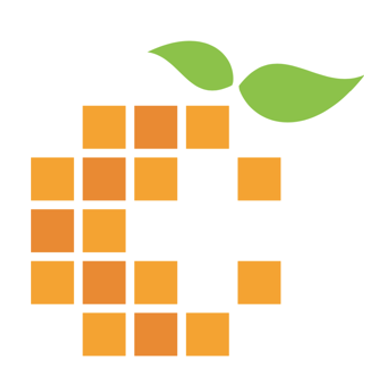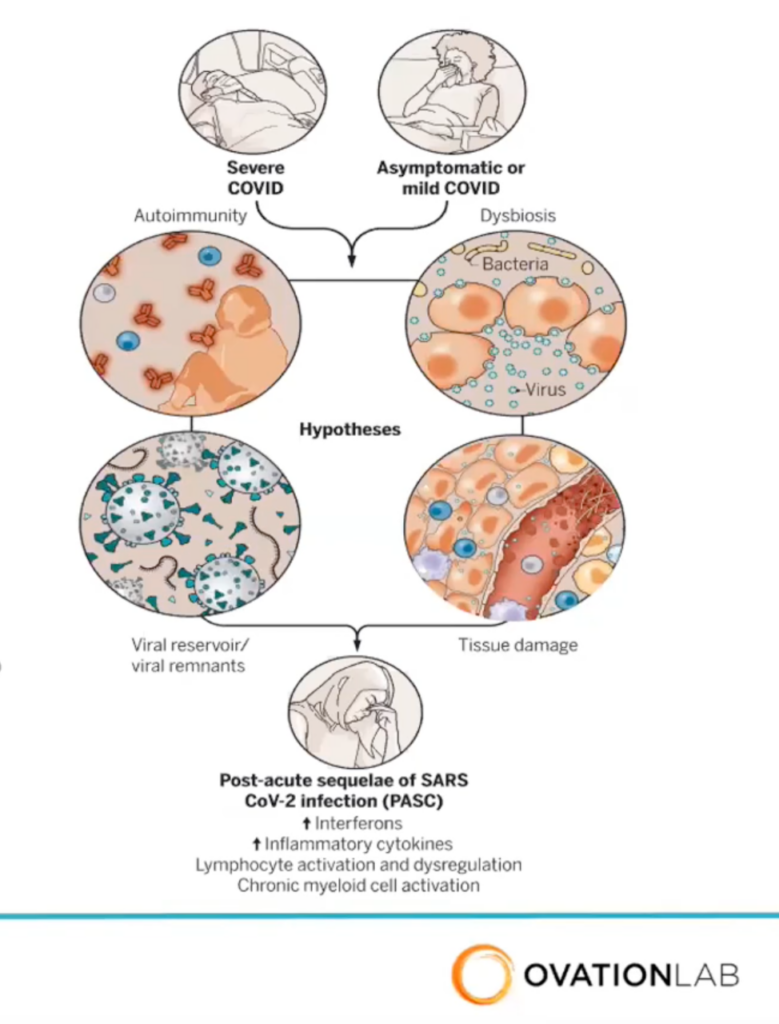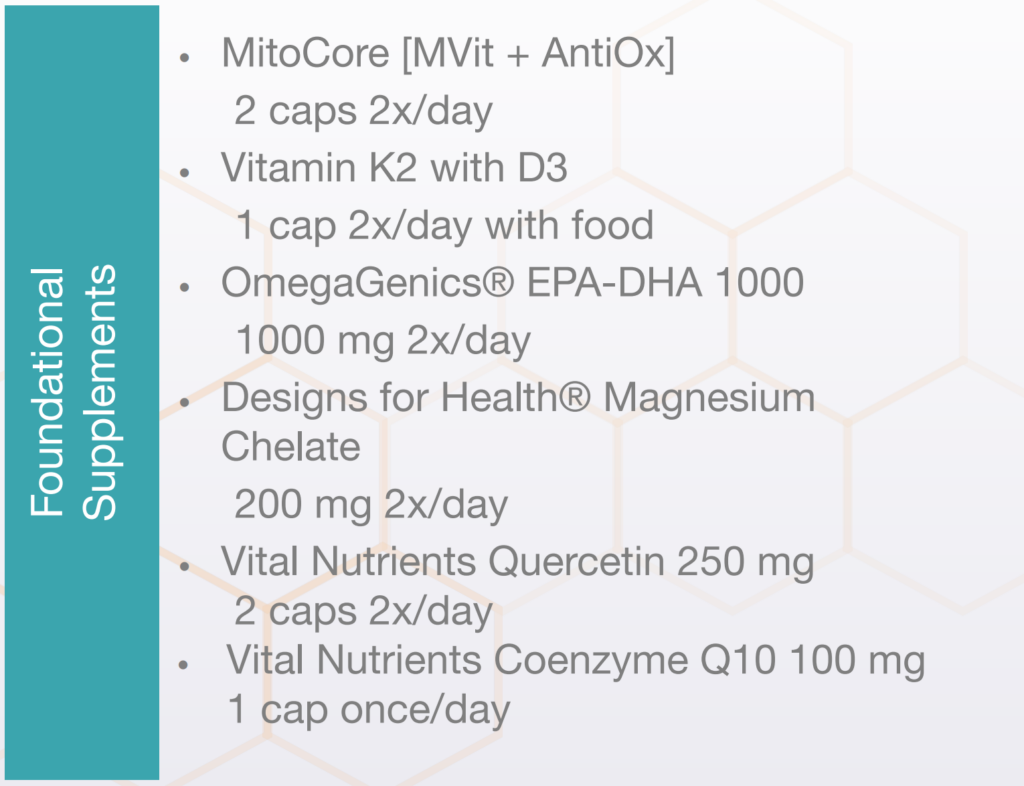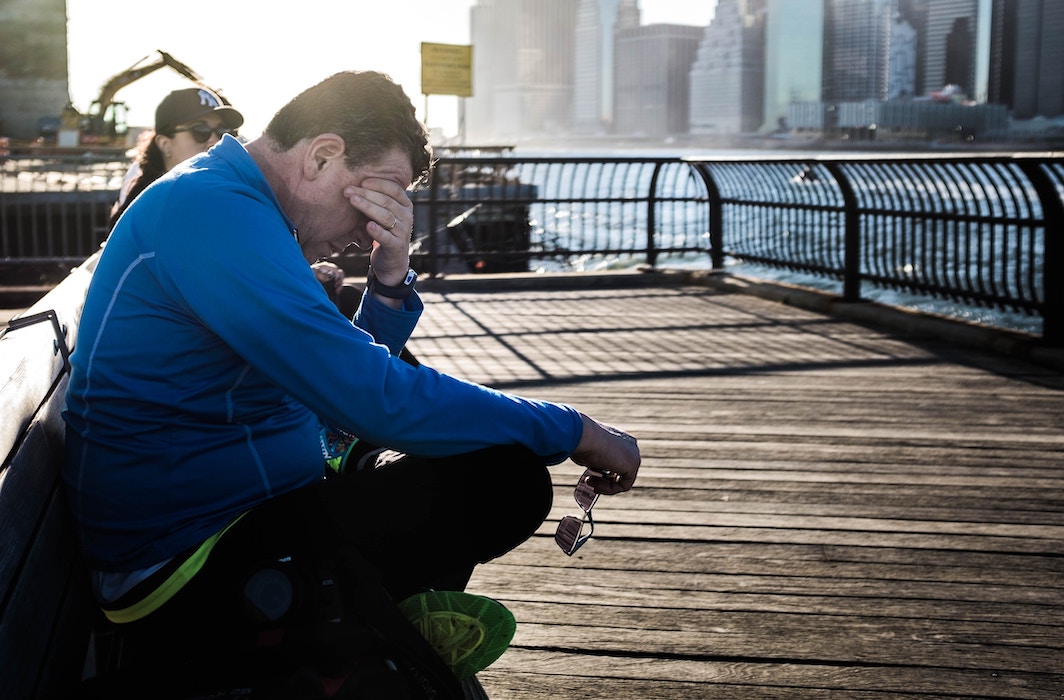
Secure Ordering | Free Shipping | 20% Off Retail Prices
Along with providing information on whether long covid supplements might be right for you, this article also links to Fullscript where you can buy supplements for long covid online through Fullscript’s secure healthcare formulary and get free shipping and 20% off the retail price of professional-grade supplements.
In the aftermath of COVID-19, many people struggle with the debilitating fatigue and brain fog known as Long COVID. This condition is not just lingering; it’s a disabling disruption of daily life. The newest research suggests that the persistence of symptoms may be due to a combination of factors: tissue damage linked to ACE 2 receptors, ongoing viral activity, imbalances in gut health, impaired energy production at a cellular level, and relentless inflammation.
Recognizing the complexity of Long COVID, researchers have developed a comprehensive targeted diet, lifestyle, and supplement strategy designed to target the root causes. It is aimed squarely at these five key drivers. This protocol is meticulously crafted by researchers and clinicians at the forefront of the long covid battle. For people dealing with the overwhelming fatigue and brain fog of long covid, this research-based 90-day protocol offers hope for reclaiming your a sense of control over your health.
Post-Viral Fatigue Was Known Long Before Covid Came Along
Throughout history, there have been numerous instances of widespread post-viral fatigue, often referred to as “post-viral syndrome” or “post-infectious fatigue syndrome”. These episodes typically arise following significant viral epidemics. They present as a complex of symptoms including profound fatigue, cognitive difficulties, and various physical symptoms that persist beyond the acute illness.
One of the earliest recognized episodes of post-viral fatigue syndrome followed the 1918 Spanish flu. That influenza pandemic infected a third of the global population and was estimated to have killed 50 million people worldwide. Survivors of the devastating outbreak reported persistent fatigue, neurologic issues, and functional impairments that persisted long after the acute illness had passed. The condition was often referred to as “encephalitis lethargica” or “sleepy sickness”, and while the exact causative connection was never established, the coincidence that it happened right after the Spanish flu pandemic was difficult to ignore.
Perhaps the most well-known example of post-viral fatigue is Chronic Fatigue Syndrome (CFS), which surged in recognition during the 1980s and has been linked to various viral infections. Infections with the Epstein-Barr virus and Ross River virus, among others, have all been associated with the later development of CFS/ME. People with this condition experience severe, unexplained fatigue, cognitive difficulties, sleep abnormalities, and a range of other symptoms. Then, there was the outbreak of a similar illness in Lake Tahoe, Nevada, in the late 1980s. Over 200 people fell ill with what appeared to be an initially acute illness that eventually gave way to a chronic condition characterized by profound fatigue.
Prevalence of Long Covid
So the appearance of “long covid’ is really only just the most recent example of post-viral fatigue. Another fancy term is “Post-Acute Sequelae of SARS-CoV-2 infection” (PASC). Symptoms commonly reported include severe fatigue, cognitive difficulties often referred to as “brain fog”, shortness of breath, and others.
Estimates of long COVID prevalence in the general U.S. population range from 10% to 30% of all cases of acute infection, with higher rates among older, female, hospitalized, and unvaccinated patients.
Prevalence and Characteristics of Long COVID 7–12 Months After Hospitalization Among Patients From an Urban Safety-Net Hospital: A Pilot Study [PMC10036151]
The 5 Main Drivers of Post-Viral Fatigue

Study Hypothesis
Researchers have hypothesized that there are 5 main drivers:
- Tissue damage: widespread cell damage in the heart, lungs, and brain are thought to be drivers of long covid.
- Viral persistence: whole viruses or viral fragments are possible.
- Chronic Inflammation is documented in long covid.
- Gut microbiome disturbance is documented in long covid.
- Blood vessel micro-clotting related to tissue damage may be causing impaired oxygenation.
How Supplements Target The Drivers of Long Covid
The protocol supplements were carefully chosen by the researchers for this long covid protocol study. Although the list is extensive and costly, each supplement targets a critical aspect of the complex physiology driving long covid. There is a highly detailed explanation in the second workshop video showing how each of these supplements works.
- Foundational Supplements were selected to support the healing of widespread tissue damage.
- Tolovid was chosen to target viral clearance. [PMC7286838], [Case Study, ResearchGate]
- ITIS was chosen to address chronic inflammation.
- MegaSporeBiotic and prebiotic address gut microbiome disturbance.
- Arterosil was chosen to address vascular damage. [PMID: 36332287]
Overview of the Long-Covid Treatment Protocol
- Plant-Based Anti-Inflammatory Foods: Inflammation is the hallmark of long covid, so the diet during this period of recovery must be as anti-inflammatory as possible. The Whole30 diet is discussed below.
- Targeted Supplements: These address tissue damage, inflammation, vascular damage, viral clearance, and gut dysbiosis.
- Sleep: Quality sleep is critical to the success of your recovery. Our sleep article will provide some strategies that have been proven to work.
- Stress Management: Stress Management is critical to the recovery of your energy. There are many resources for meditation that can help you learn techniques for calming down, but sometimes a person gets stuck in a state of “fight or flight” where extreme anxiety is triggered by the tiniest of stressors. There are two programs that are specifically designed to “reset the limbic system” to help a person to get out of the “fight or flight” state of being. These 2 well-regarded programs are the DNRS Program and the Gupta Program. Recently, the Gupta program published a study validating that the process of “Amygdala and Insula Retraining (AIR)” significantly reduces fatigue compared to a placebo wellness program. [PMC10365910]
- Physical Activity: The main guideline for physical activity is to listen to your own body. Do as much physical activity as you feel you can do without setting yourself back. Post-exertional malaise is a real thing, and it’s counterproductive.
Additionally, you may need Breathing Exercises to help support your physical activity efforts. Here’s a basic guide for Bouncing Back From COVID-19. And, if your symptoms since covid include rapid heart rate upon standing, dizziness, or fainting, you may be experiencing “Postural Orthostatic Tachycardia Syndrome” (POTS). If so, this POTS Exercise Program may be helpful.
Ovation Research Study
Although we are now more than 3 years into the pandemic with untold thousands of people in the US and worldwide suffering from long covid symptoms, there are still no formal studies to prove what works best in recovery. That sad and frustrating fact is the motivation for the current ongoing study and the current research protocol.
The origin of this post-viral protocol is described in the two videos that follow. These workshop videos were designed to educate medical providers on how to implement the protocol and how to participate in the ongoing study. The study is designed to prove scientifically how well this protocol of targeted nutritional supplements plus an anti-inflammatory diet with lifestyle measures works to alleviate long covid symptoms.
Documenting Your Progress
Even if you are not participating in the formal research study described in the videos, you will want to follow the study protocol closely for your best chance at recovery. And when you invest so much in following the protocol, you will want to be able to tell whether it is really working.
It can be hard to remember how you were feeling 2 or 3 months ago, so it’s easy to miss how much progress you are actually making. This leads to wondering whether the protocol is really working or if it might be “all in your head” or the placebo effect. Here’s where the Promise-29 Questionnaire comes in. Along with the symptoms table below, it can help you get your symptoms down on paper in a documented way.
- Promise-29 Questionnaire: This questionnaire should be taken repeatedly: once before treatment to establish a baseline of symptoms, and then at days 30, 60, and 90 of the treatment program to document changes in various symptoms over the course of time.
- Timeline and Progression of Symptoms Table – this might be helpful in communicating with your physician about the complex timelines of your many symptoms.
Post-Viral Recovery Workshop -Session 1
This first session lays out the theories that experts have about what is driving Long Covid symptoms. It also discusses the logistical issues related to the research study.
Post-Viral Recovery Workshop -Session 2
This second session takes a deep dive into the supplements that are prescribed in the protocol.
Update: October 2023
It was discovered that there is a problem with absorption of tryptophan from the gut, therefore a new recommendation for 100mg of 5-HTP to be added to the protocol to increase serotonin synthesis for mood support.
What To Eat For Long Covid Recovery
There are many diets that are anti-inflammatory to one degree or another, but research has shown that a plant-based diet is effective in reducing symptoms that are common to people experiencing long covid. [PMC8429479]
The Whole 30 Diet meets these criteria and was chosen for the research protocol because it has so many practical resources on the Whole30.com website:
- Whole 30 Diet Program Rules
- Plant-Based Recipes
- Plant-Based Whole30 Details
- Grocery Guide
- Shopping List
The Whole30 diet is usually used as a month-long nutritional program, but long covid sufferers should follow it during the 90 days of the protocol to get the benefits of its anti-inflammatory effects. The primary principle of the Whole30 program is to remove certain food groups from your diet that are often linked to inflammation, digestive issues, and cravings, including sugar, artificial sweeteners, alcohol, grains, legumes, dairy, and processed foods.
Supplement Plan 90-Day Overview
Shown on the left, there are core supplements that are meant to help your basic body needs. On the right, is a schedule for the specialty supplements for Long Covid.
Core Supplements

Preparing For The First Month
As much as we would all love to point to a cheap and easy fix for Long Covid, this protocol definitely involves some work. Between ordering the supplements and planning for food and exercise changes, it will take some time to get started with the protocol. Again, here are the links to some practical resources:
- Whole 30 Diet Program Rules, Work On Sleep, Get Physical Activity, and Manage Stress.
- Print out 4 Copies of the Promise-29 Questionnaire. Mark your calendar to record your symptoms on Day 1, Day 30, Day 60, and Day 90 to document your progress.

The Second Month
Again, remember to record the Promise-29 Questionnaire on Day 30 and Day 60 to document your progress. Keep following the Whole 30 Diet to get those critical anti-inflammatory benefits. Keep working on Sleep. Keep working to Manage Stress. Do what you can to stay active while avoiding post-exercise fatigue. Together, all these things are critical and work synergistically with the supplementation protocol to support your recovery.

The Third Month of The Protocol
By now, you may be feeling better and encountering temptations to eat french fries and ice cream. But remember: all those foods you have been avoiding are the ones that drive that drop-dead fatigue-inducing inflammation you are trying so hard to leave behind. You deserve a full recovery and the wrong foods threaten to sabotage that energy you need so badly. So, keep following the Whole30 plan for at least the whole 90 so that you can get those critical anti-inflammatory benefits.
Don’t forget to record the Promise-29 Questionnaire on Day 60 and Day 90 to document your progress. Keep working on Sleep and Manage Stress. Do what you can to stay active while avoiding post-exercise fatigue. Together, all these things are critical and work synergistically with the supplementation protocol to support your recovery.

To Sum It Up
It’s clear that Long COVID’s chronic symptoms require a multi-pronged approach. The 90-day protocol we’ve shared here, grounded in solid research, offers a practical roadmap for those struggling with the fatigue and confusion that Long COVID brings. By combining specific dietary changes, lifestyle habits, and supplements, there’s real potential for sufferers to alleviate their symptoms and regain a sense of normalcy. As this field evolves, so will our strategies, always aiming to improve the lives of those affected by Long COVID. This protocol isn’t just about managing symptoms—it’s a step towards taking back control of your health and your life.
If you or your patients follow this protocol, be sure to come back to this article and comment so that others can learn from your experience.
This Article is Not a Substitute for Medical Advice
Dietary supplements are not designed to diagnose, treat, cure, or prevent any disease. The Supplement Sciences website seeks to provide comprehensive access to the most relevant supplement information along with convenient online ordering. We do not provide medical advice and cannot guarantee that every product suggested is completely without risk. Since each person is unique in their health history and medication use, it is important to discuss supplements with your personal physician. Specifically, pregnant women and individuals being treated for cancer or liver or kidney problems must consult their physician about every nutritional supplement they plan to take. People taking medications for the treatment of HIV or with a history of organ transplant must not take supplements without consulting with their physician.

 Scan Me!
Scan Me!


